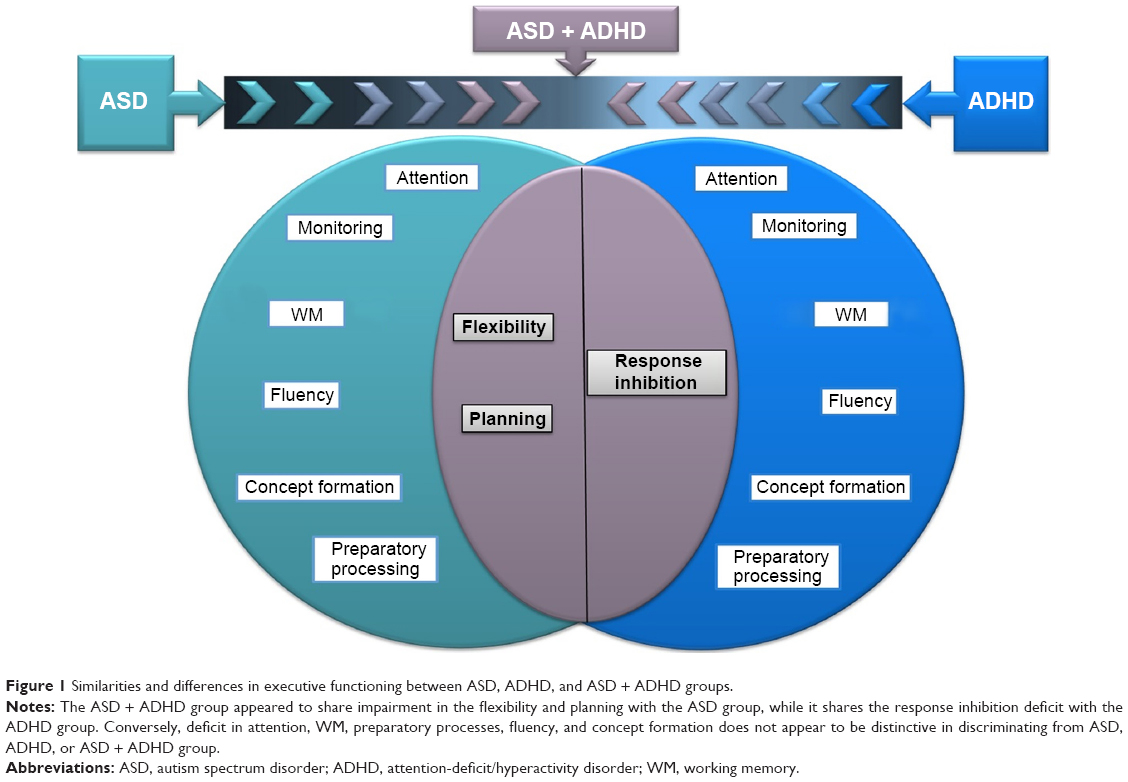
Research has found that people with ADHD often have low levels of the neurotransmitter dopamine, which has many important functions, including having complex roles in thought (cognition), motivation, behavior, and control of movement. The specific ways that changes in associated genes are involved in the development of ADHD are unknown. Other proteins have roles at the connections between neurons ( synapses ) where this communication takes place. Some of these proteins help produce or control the chemicals that relay communication signals between neurons ( neurotransmitters ). Other genes associated with ADHD provide instructions for proteins that are important for communication between neurons. The various proteins produced from these genes affect multiple aspects of brain development, including production, growth, or organization of nerve cells ( neurons ).

The genes associated with ADHD are thought to be involved in the development of the brain. In most individuals with ADHD caused by rare gene mutations, a mutation in a single gene is enough to cause the disorder. In these instances, ADHD is usually one of several features of a syndrome that affects multiple parts of the body. Less commonly, ADHD is caused by rare gene mutations or chromosome abnormalities. It is unclear how genetic and environmental factors influence each other to contribute to ADHD. Environmental risk factors that may contribute to the development of ADHD include complications during pregnancy and delivery and exposure to heavy metals such as lead. These variations also combine with environmental risk factors to determine an individual's risk of developing this complex condition. Many of the gene variations have only a small effect, and most people with ADHD are thought to have numerous associated gene variations. Because they are common in many populations worldwide, not all people with these gene variations will have the condition. Many gene variations, most of which have not been identified, are thought to affect the risk of developing ADHD.

In most affected individuals, ADHD continues throughout life, but in about one-third of individuals, signs and symptoms of ADHD go away by adulthood.Ĭhanges in dozens of genes have been associated with ADHD. Affected individuals may also have autism spectrum disorder, which is characterized by impaired communication and social interaction, or Tourette syndrome, which is a disorder characterized by repetitive and involuntary movements or noises called tics.

More than two-thirds of all individuals with ADHD have additional conditions, including insomnia, mood or anxiety disorders, learning disorders, or substance use disorders. Individuals with poor impulse control may have difficulty waiting for their turn, deferring to others, or considering their actions before acting. Impulsivity can result in hasty actions without thought for the consequences. Individuals with this feature often fidget or tap their foot when seated, leave their seat when it is inappropriate to do so (such as in the classroom), or talk a lot and interrupt others. Hyperactivity is usually shown by frequent movement. Because of an inability to stay focused on tasks, people with inattention may be easily distracted, forgetful, avoid tasks that require sustained attention, have difficulty organizing tasks, or frequently lose items. In people with ADHD, the characteristic behaviors are frequent and severe enough to interfere with the activities of daily living such as school, work, and relationships with others. Some people with ADHD have problems with only inattention or with hyperactivity and impulsivity, but most have problems related to all three features. Attention-deficit/hyperactivity disorder (ADHD) is a behavioral disorder that typically begins in childhood and is characterized by a short attention span (inattention), an inability to be calm and stay still (hyperactivity), and poor impulse control (impulsivity).


 0 kommentar(er)
0 kommentar(er)
